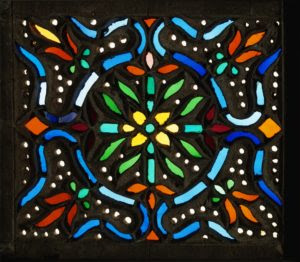[Crosspost from my Tumblr blog 15 October, where I stashed these thoughts during the site hiatus.]

Today I amused myself by ficcing my own ‘verse, as I like to do sometimes when I need a little pick-me-up. The majority of my main characters live in a country that is matrilineal, for reasons which I had fun building out. (Matrilineal, I say, not matriarchal — but even a matrilineal society is so far from the current landscape I live in that there seems little difference from this vantage, as I shall soon demonstrate.) One of them is the youngest of thirteen children, whose mother is a hard-working and locally influential farmer in a rural northern district. So today’s fun involved me making up stories for myself about his eldest sister and how she went about starting her own family with the help of a cousin from the next village over.
Now, I wanted to work out just how distant of a cousin I wanted her partner to be (I quite like him, he’s a nice fellow, very decent despite having grown up in a small and rather dysfunctional community), so I grabbed a sheet of paper and started to jot down a genealogical diagram…
And then had to stop, flummoxed. You know what a genealogical diagram looks like: a line is drawn between a man and a woman to signify they are married and/or had children, and then the next tier shows the children all depending from a single bar. But for Rosemary Douglas, mother of thirteen, head of her household, that doesn’t work. In her childbearing career she made contracts for children that double as local alliances with men who could afford to commit to sworn sponsorship. All of them planned — except for her youngest. How the hell would I diagram that?
I decided — I couldn’t. I’d just have to leave the fathers out. But neither did it make much sense to just have Rosemary, with a bar below her marked with all her children’s names in birth order from left to right, with no room for the kind of detail one would want for working out genetic relationships in matters like this. How would Ilonians diagram their genealogies, then?
I wound up drawing something like a factorial: Rosemary at the center, with her sons in a segmented line down the left, and her daughters in line down the right, the elder closer in and the youngest at ends of each line. Her daughters could be diagrammed the same way: a hinterland rather than a tree, very Ilonian. To work out genetic details at need, one could write the name of the father/sponsor on the line segment between Rosemary and each child, and work back to his mother from there. You could see then how often lines would cross and avoid overentanglements.
I have no idea how actual maternal lines are diagrammed in RL. But I was sort of shocked afresh at how spatially embedded in our minds patriarchy is. I was used to thinking of a Bowen genealogical diagram as a logical reflection of how humans are, how their generations pass, universally. But it isn’t, really. It’s like how “matrimony” doesn’t mean the same as “patrimony” except with mothers: matrimony means “I have acquired a womb!” and patrimony means “I have acquired a dynasty!”
In any event, in reference to quotations I’ve seen round here about sci-fi and fantasy as the kind of imaginative activism necessary to envision a better world for ourselves, I have been doing exactly that: telling myself stories of people living complicated, imperfect, not-always-easy lives in a world I want to see emulated, for the sake of my own sanity in these times. And I’m telling you about it, in case it helps.
